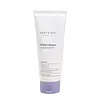What's inside
What's inside
 Key Ingredients
Key Ingredients

 Benefits
Benefits

 Concerns
Concerns

 Ingredients Side-by-side
Ingredients Side-by-side

Hydrolyzed Collagen Extract 46.6%
Skin ProtectingMyristic Acid
CleansingPalmitic Acid
EmollientGlycerin
HumectantStearic Acid
CleansingPotassium Hydroxide
BufferingLauric Acid
CleansingWater
Skin ConditioningBeeswax
Emulsion StabilisingDipropylene Glycol
HumectantLauryl Hydroxysultaine
CleansingNiacinamide 1%
SmoothingGlyceryl Stearate Se
Emulsifying1,2-Hexanediol
Skin ConditioningHydroxyacetophenone
AntioxidantButylene Glycol
HumectantCaprylyl Glycol
EmollientDisodium EDTA
Sodium Hyaluronate
HumectantParfum
MaskingHydrolyzed Collagen Extract 46.6%, Myristic Acid, Palmitic Acid, Glycerin, Stearic Acid, Potassium Hydroxide, Lauric Acid, Water, Beeswax, Dipropylene Glycol, Lauryl Hydroxysultaine, Niacinamide 1%, Glyceryl Stearate Se, 1,2-Hexanediol, Hydroxyacetophenone, Butylene Glycol, Caprylyl Glycol, Disodium EDTA, Sodium Hyaluronate, Parfum
Lavandula Angustifolia Oil
MaskingArtemisia Vulgaris Extract
Skin ConditioningHydrolyzed Elastin
EmollientMelaleuca Alternifolia Leaf Extract
PerfumingParfum
MaskingLimonene
PerfumingLinalool
PerfumingAcetyl Hexapeptide-8
HumectantCopper Tripeptide-1
Skin ConditioningPalmitoyl Pentapeptide-4
Skin ConditioningAcetyl Tetrapeptide-5
HumectantPalmitoyl Tripeptide-1
Skin ConditioningNonapeptide-9
Skin ConditioningLunaria Annua Seed Oil
EmollientHelianthus Annuus Seed Oil
EmollientGlycine Soja Oil
EmollientTocopherol
AntioxidantGluconic Acid
Lavandula Angustifolia Oil, Artemisia Vulgaris Extract, Hydrolyzed Elastin, Melaleuca Alternifolia Leaf Extract, Parfum, Limonene, Linalool, Acetyl Hexapeptide-8, Copper Tripeptide-1, Palmitoyl Pentapeptide-4, Acetyl Tetrapeptide-5, Palmitoyl Tripeptide-1, Nonapeptide-9, Lunaria Annua Seed Oil, Helianthus Annuus Seed Oil, Glycine Soja Oil, Tocopherol, Gluconic Acid
 Reviews
Reviews

Alternatives
Ingredients Explained
These ingredients are found in both products.
Ingredients higher up in an ingredient list are typically present in a larger amount.
Parfum is a catch-all term for an ingredient or more that is used to give a scent to products.
Also called "fragrance", this ingredient can be a blend of hundreds of chemicals or plant oils. This means every product with "fragrance" or "parfum" in the ingredients list is a different mixture.
For instance, Habanolide is a proprietary trade name for a specific aroma chemical. When used as a fragrance ingredient in cosmetics, most aroma chemicals fall under the broad labeling category of “FRAGRANCE” or “PARFUM” according to EU and US regulations.
The term 'parfum' or 'fragrance' is not regulated in many countries. In many cases, it is up to the brand to define this term.
For instance, many brands choose to label themselves as "fragrance-free" because they are not using synthetic fragrances. However, their products may still contain ingredients such as essential oils that are considered a fragrance by INCI standards.
One example is Calendula flower extract. Calendula is an essential oil that still imparts a scent or 'fragrance'.
Depending on the blend, the ingredients in the mixture can cause allergies and sensitivities on the skin. Some ingredients that are known EU allergens include linalool and citronellol.
Parfum can also be used to mask or cover an unpleasant scent.
The bottom line is: not all fragrances/parfum/ingredients are created equally. If you are worried about fragrances, we recommend taking a closer look at an ingredient. And of course, we always recommend speaking with a professional.
Learn more about Parfum